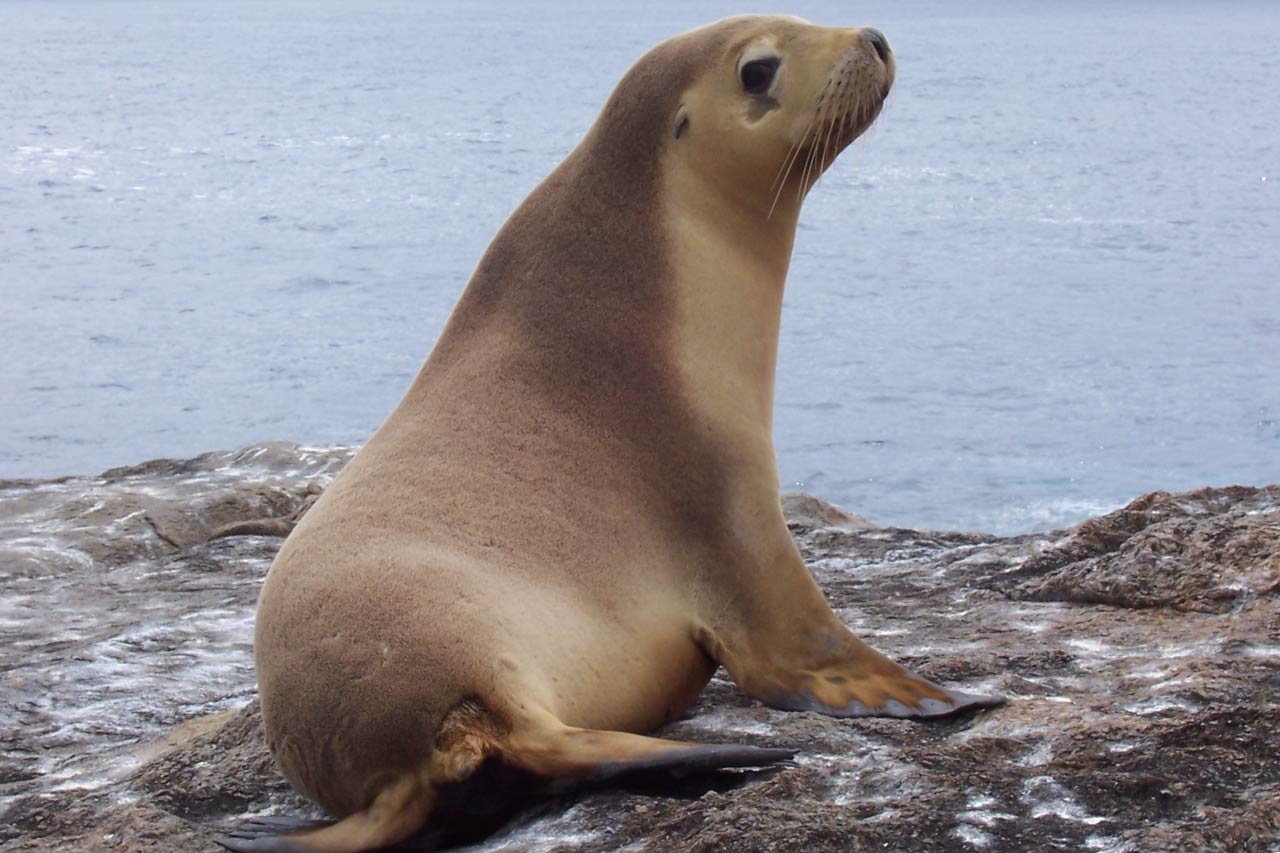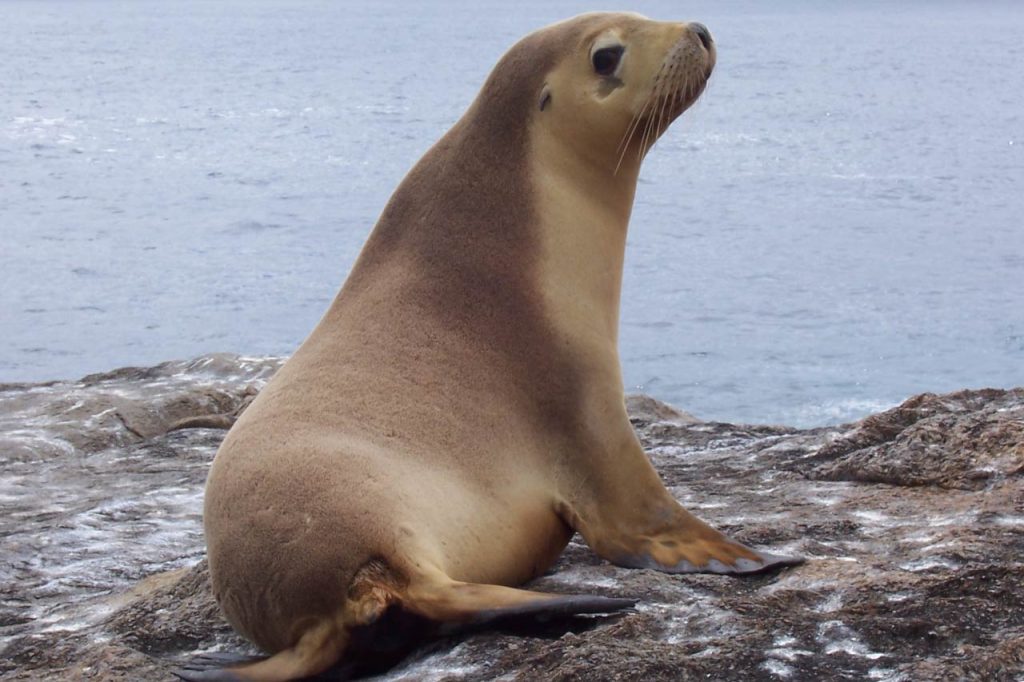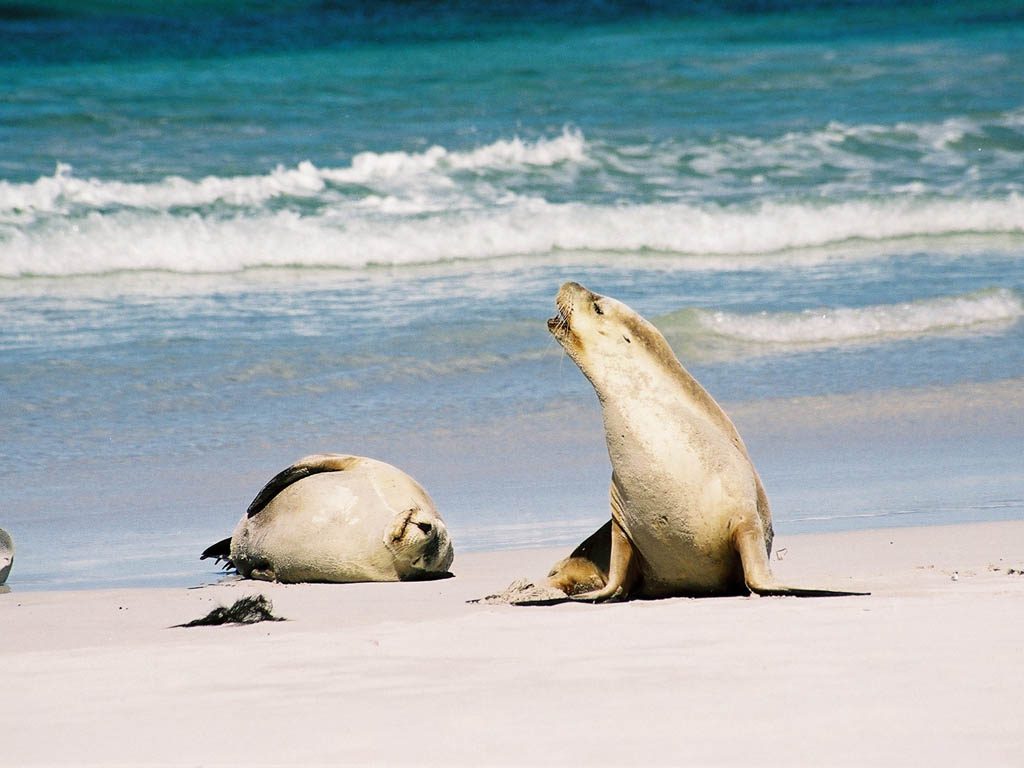The Australian sea lion is a semi-aquatic mammal native to Australia. This endangered species is one of the world's most threatened marine mammals. Read on for Australian sea lion facts, pictures and in-depth information…
Australian Sea Lion Facts At A Glance
- Other Name(s): Hair seal, white-necked hair seal, white-capped hair seal, counselor seal
- Scientific name: Neophoca cinerea
- Type of Animal: Mammal
- Animal Family: Otariidae (the eared seal family)
- Where Found: Australia (Western Australia and South Australia)
- Length: male 185 to 225 cm (73 to 89 in); female 130 to 185 cm (51 to 73 in)
- Weight: male 180 to 250 kg (397 to 551 lb.); female 65 to 100 kg (143 to 220 lb.)
- Conservation Status: Endangered
Meet The Australian Sea Lion: Introduction
The Australian sea lion is a member of a group of semi-aquatic mammals known as pinnipeds. This group contains the seals and sea lions together with the walrus.
The Australian sea lion is the only pinniped endemic* to Australia.
* endemic = only found in
The species is the only living member of the genus Neophoca. Its closest known relative, the Pleistocene New Zealand sea lion (Neophoca palatina), became extinct many thousands of years ago.
(The Pleistocene New Zealand sea lion is not to be confused with the New Zealand sea lion, a species which, like the Australian sea lion, is currently endangered.)
What Does The Australian Sea Lion Look Like?
Like all sea lions it is able to reverse its hind flippers and use them as feet, which it uses to waddle around with when ‘hauled out’ on land. (This is one of the main differences between sea lions and true seals, who can’t reverse their hind flippers and are therefore less maneuverable when out of the water.)
The Australian sea lion is ‘sexually dimorphic’, which means that there are significant physical differences between males (bulls) and females (cows).
The male is significantly larger, weighing 2.5 to 3.5 times as much as the female. It is also more robustly-built, with a larger head and broader shoulders.
Mature male Australian sea lions range in color from chocolate brown to almost black. The neck and the top of the head are cream-colored.
Females and infants range in color from light brown to silver-gray and have pale yellow or tan undersides. Pups are chocolate brown until their first molt, which occurs at around 2 months of age.
Where Does The Australian Sea Lion Live?
The largest colonies are found on the Pages Islands, Seal Bay on Kangaroo Island and on the Dangerous Reef in the Spencer Gulf. All of these locations are in South Australia near Adelaide.
Australian Sea Lion Habitat
The Australian sea lion is usually found on sandy beaches and smooth rocks in sheltered bays and in shallow waters near the shore. The species seldom dives deeper than 150 m (492 ft.).
During periods of stormy weather the Australian sea lion may venture several miles inland to seek shelter among sand dunes and vegetation.
Behavior
The Australian sea lion is non-migratory. A social animal, it lives in colonies and has a high degree of site fidelity (i.e. colonies rarely move from established haul-out and breeding sites).
Communication
Australian sea lion vocalizations include growls, clicks and barks. Males use ritualized body posturing and vocalize extensively during the breeding season.
Mothers and pups use both vocalizations and scent in order to recognize one other after the mother returns from foraging trips.
Australian Sea Lion Life Cycle
Females come into estrus (i.e. become ready to mate) very soon – around 7 to 10 days – after giving birth. At this time males become highly-possessive over potential mates, using posturing, vocalizations and aggression to see off rival males.
After a period of around 14 months after mating (the longest gestation period of any pinniped) the female gives birth to a single pup. This takes place on land. Newborn pups are around 60 to 70 cm (24 to 28 in) in length and weigh around 6.5 to 8 kg (14 to 18 lb.).
The mother stays with the newborn pup for around 10 days. She will then begin to leave the pup while she goes to sea to forage. She will continue to nurse the pup between foraging trips.
At around 3 months of age the pup will begin to accompany its mother on foraging trips.
Infants are usually weaned just prior to the female giving birth to her next pup. After a new pup has been born, the mother will repel an older pup if it approaches. If the female did not immediately breed again after giving birth then nursing is known to continue for several years.
Females have been observed both nursing and being aggressive to pups that are not their own. Males in particular are known to show aggression to pups.
What Do Australian Sea Lions Eat?
The Australian sea lion’s diet consists of a wide range of marine animals. It includes cephalopods such as octopus, cuttlefish and squid; fish such as wrasse, cods, leatherjackets, mullets, perch, flatheads, rays and small sharks; and crustaceans such as crabs, rock lobster and prawns.
The little penguin may occasionally also fall prey to the Australian sea lion.
Australian Sea Lion Predators
The Australian sea lion’s main predator is the great white shark. It may also be targeted by the killer whale.
Is The Australian Sea Lion Endangered?
The Australian sea lion is rated ‘Endangered’ by the IUCN and is one of the world’s most threatened pinnipeds.
The species was subject to heavy hunting during the 19th century. Although today the Australian sea lion is protected in both South Australia and Western Australia and also by national legislation, its population is declining.
The current total population is estimated to be around 10,000 to 12,000. The main subpopulations are either stable or slightly decreasing, with many colonies producing fewer pups each year.
Factors that make the species vulnerable to extinction include its unusually long breeding cycle and the separation of the species into numerous small, isolated subpopulations.
Notable threats to the Australian sea lion include:
- Bycatch: Accidental capture in gillnets and traps currently poses the most serious threat to the Australian sea lion.
- Habitat degradation: Pollution from oil spills, land run-off and sewage affect habitat quality, while marine debris can cause the animals to become entangled and drown.
- Human disturbance: Increase in tourism and human activity near breeding sites brings more marine traffic and noise pollution, which can cause the animals to abandon their haul-out sites and retreat to the sea.
Australian sea lion populations have also been negatively affected by a decrease in the amount of available prey and outbreaks of viral disease.
Australian Sea Lion Facts: Discover More at Active Wild
- Find out more about mammals: Mammals: The Ultimate Guide
- Discover more Australian animals: Australian Animals List with Pictures and Facts
- Become an animal expert: Animals: The Ultimate Guide to the Animal Kingdom






What are the Australian sea lion’s adaptations?